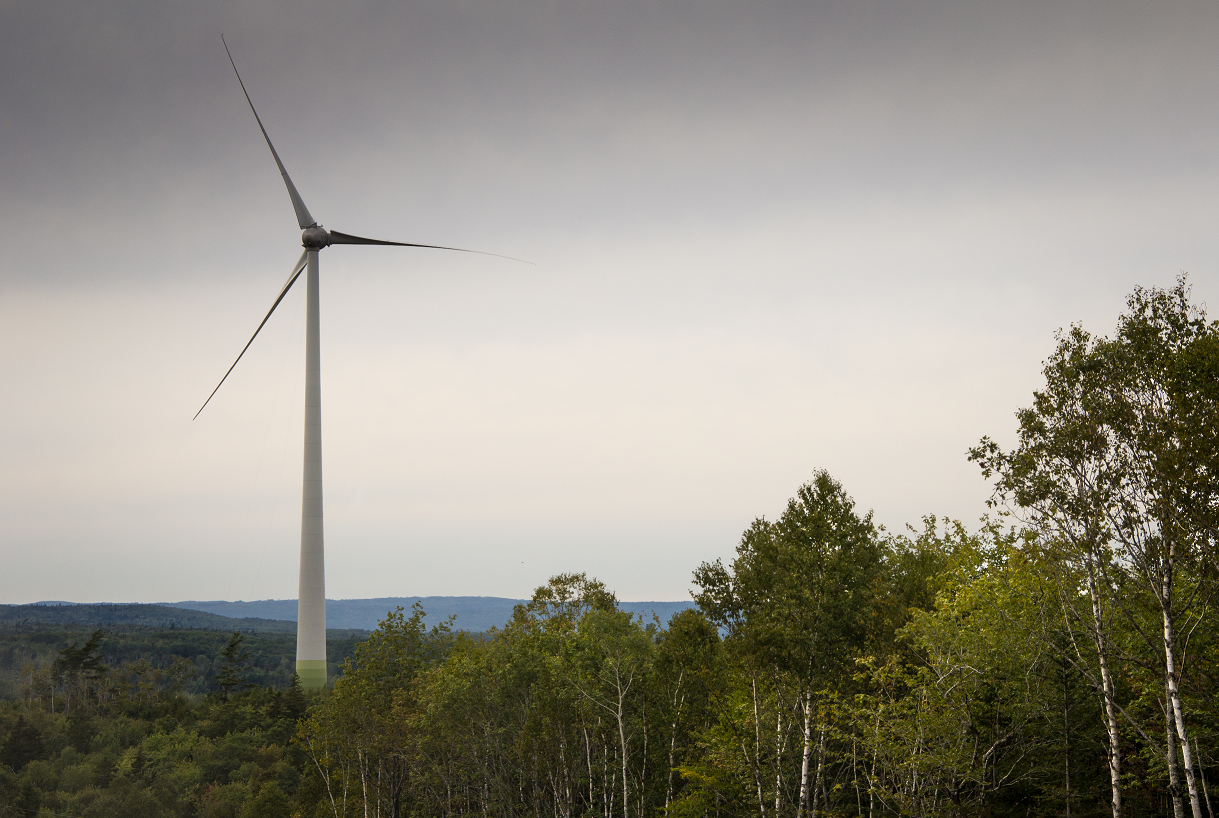The Power of Municipal Collaboration
A partnership between three Nova Scotia towns to develop a wind farm to power their communities could be a national model for municipal cooperation on renewable energy projects.
By Aaron Long, January 9, 2020
Saint John Energy is working to develop the city’s first wind energy project with Burchill Wind Energy Project, which is being built in Spruce Lake Industrial Park. The project will provide up to 42 megawatts of clean, affordable energy to Saint John homes and businesses. As part of its research, it looked at other community utilities developing successful wind projects including Nova Scotia’s Alternative Resource Energy Authority (AREA).
“They don’t just own a wind farm. In a sense, they own their communities’ energy destinies.”
In 2013, Mahone Bay, Antigonish and Berwick came together to begin looking for ways to combat rising power costs and achieve green energy targets proposed by the province. They created the Alternative Resource Energy Authority, an intra-municipal organization, to manage the initiative. AREA advised the towns to build a wind farm and hired Minas Energy to help AREA navigate the permitting and construction activities required to achieve commercial operation of the wind farm.
The partnership provided strength in numbers, allowing the towns to collectively pursue a project none had the resources to do alone. It also marked a significant shift for the municipal utilities, from passive energy distributors retailing wholesale power to their customers, to active green-energy producers.
In 2015, construction on the Ellershouse Wind Farm, in West Hants, began. Today, the farm’s 10 turbines produce up to 23.15 megawatts, supplying 40 percent of the energy for the three municipal utilities and the Riverport Electric Light Commission.
With this move into renewables, these Nova Scotia towns have the autonomy to generate cost-effective, clean electricity for their customers. They don’t just own a wind farm. In a sense, they own their communities’ energy destinies.
The Ingredients for Success
Wind projects, while exciting, are becoming relatively common and widespread.
What is unique and impressive in this model is that municipalities in different parts of Nova Scotia were able to work together to create new revenue streams for their towns and energy stability for their customers.
“We’re more than just trying to make a profit here, we’re all about trying to sort out ways to deal with the need for energy for the next 25 or 30 or 40 years going forward.”
The willingness to collaborate was the first ingredient for success. That may sound simple, but getting municipalities to partner on projects – especially one as ambitious as this – is notoriously tricky business.
In this case, the towns had clear, compelling common objectives around which to rally. And while each community is unique, they have similar histories when it comes to electricity. Each runs their own utility, so they understand the challenges and opportunities and could relate to each others’ experiences.
Add to this operational excellence in their staff and leadership on council, and the elements for success were all there.
The Benefits
“As all Canadian jurisdictions move towards more aggressive renewable energy targets, possibilities for municipal ownership of green energy assets should be given serious consideration.”
The Ellershouse Wind Farm generates a number of benefits, none greater than price predictability. The project provides approximately 40 percent of the towns’ energy, and at extremely stable rates.
Then there are the environmental benefits. Ellerhouse has allowed these communities to reduce their carbon footprint by approximately 30,000 tonnes a year.
Taxpayers also win. Revenues generated by the project help pay for municipal expenses and projects without the towns necessarily having to raise taxes to bankroll them. And the project is contributing directly to the communities through the Ellershouse Wind Farm Society, which gives $10,000 a year to local initiatives.
What’s Next
With the success of the wind farm at their backs, Mahone Bay, Antigonish and Berwick are now looking at other renewable energy projects to pursue in the future, such as utility-scale solar gardens.
“Please get on board with us. This is as green as you can find. We’re going to meet the provincial deadline for us to be supplying 40% green energy by 2020 - we’re going to meet that and we’re probably going to be the only ones who are going to do that on a provincial basis.”
Another area of focus will be customer behaviours. Electrification with renewables must be part of the larger shift to decarbonization, so we’ll be promoting other green technologies, such as heat pumps and electric cars, to community members.
With this partnership, a model for municipal cooperation has been tested – and proven. It could be an example to other towns. There’s a tremendous opportunity for municipalities across Canada to generate their own clean, least-cost energy.
AREA continues to provide feedback and guidance to Saint John Energy. Based on the success they have experienced with their local energy projects, they applaud Saint John Energy for looking to renewables as a new way to grow their community and local energy expertise.
Aaron Long is the director of business services with the Alternative Resource Energy Authority.
For the past 5 years, he has focused his attention on strengthening and creating new revenue sources for Nova Scotia municipalities in the context of the transition to clean energy systems. Municipal ownership of risk-appropriate cleantech projects also enables least-cost renewable energy to end-users. Aaron worked in various capacities on the development and operations of the 99MW West Cape Wind Farm, 99MW Caribou Mountain Wind Farm and the 102MW South Canoe Wind Farm. His favourite engagement is with the 23.5MW Ellershouse Wind Farm, the latter owned entirely by the small towns of Antigonish, Mahone Bay and Berwick, which supplies over 40% of its owner towns' annual energy requirements. Aaron is also currently helping these municipal electric utilities prepare for the future.


